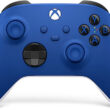Buying a new hard drive can sometimes be a challenge, with all the possibilities available on the market, in fact, browsing the best deals can put us in a difficult position to make the correct decision. So let’s see in this short guide what are the things to consider to make it easier for us to buy a new hard drive.
Which hard drive should I buy?
The choice of the right hard disk is obviously indicated by the final use that you intend to make, therefore it is important to identify speed, shape and price of course.
It must also be considered that each hard disk has a more or less short life depending on the quality of the hard disk.
Let’s start with the distinction of the two main categories of hard drives available:
- Hard Disk Drives HDD: A solid rotating metal disks found in older/traditional drives
- Solid State Drive SSD: A type of data drive that uses flash memory
The two main categories have different PROS AND CONS to take into consideration, but in principle we can say that the future lies in Flash and SSD memories, for their better reliability and write / read speed.
Pros of SSDs
- SSD hard drives they read and write data faster .
- SSDs consume less energy saving energy and extending the battery life of your computer (if portable).
- SSDs have no moving parts, so they don’t they make noise And have a longer duration because they are more resistant to shocks.
Cons of SSDs
- SSDs are typically more expensive
- For the same capacity as a traditional hard drive you will have to pay at least 50% more if you want a faster and more efficient SSD
Traditional HARD DISK – Specifications and performance
HDD Dimensions and interfaces
Among hard drives, there are two traditional sizes to choose from:
- 3.5-inch drive
- 2.5-inch drive
Hard disk HDDs are composed of rotating metal disks, the greater the capacity the more disks and the greater the weight; reason for whom Desktop HDD tend to be 3.5 inches while the HDD for laptop tend to be 2.5 inches.
SSDs have no moving parts, and are generally smaller than HDDs. Therefore, the most of these hard drives are 2.5-inch .
As for connections, most modern internal drives (both HDD and SSD) use SATA connectors .
Older internal HDDs produced before the SATA standard use IDE connectors instead. For the cable output and direct connection we find the USB ports, with the USB-C variants.
- Memory capacity. HDDs are available in a wide range of capacities reaching over 15 tb for portable ones.
- Transfer speed. The performance of a HDD is determined by several factors, the first of which is RPM, the revolutions per minute. The higher the RPM value indicated on the hard disk, the faster the drive’s data transfer and write speed will be.
- Cache space. In the moment of data transfer, the hard disk uses a memory area called cache (or buffer ). A larger cache allows for faster data transfer. Modern HDD hard drives can have cache sizes ranging from 8MB to 256MB.
- Bankruptcy rate. Since HDDs have moving parts, wear is a very important factor to consider over time.
Not all hard drives fail at high speeds, but in general the life span of a HDD is 12 months to 5 years.
As for SSDs, SSDs have a lower short-term failure rate but are not suitable for long-term data storage when unplugged.
For long-term storage of data that remains disconnected for months or years, the HDD they are considered to be durable and more suitable.
Price and cost of hard drives
When searching for hard drives you will notice that the prices are very different, one way to determine the value is divide the price of the drive by its storage capacity to get its price per gigabyte .
In this way you will be able to evaluate its price per performance for products which are alike.
Hard Drive Care and Maintenance Tips
Once you’ve purchased your HDD, be sure to take good care of your hard drive to extend its life and keep it running. Here are 3 simple rules to follow:
- Beware of physical damage, avoid bumps, the less you move it the better, if we are talking about a portable hard drive make sure you have a travel case
- Beware of overheating, especially when transferring large amounts of data.
- File fragmentation, run the defrag at least once a month, to clean the hard disk, in this way you will not lose important megabytes of space and get the original speed
- Avoid power surges and frequent turning on and off, but above all eject the hard disk before disconnecting.
Conclusions
Having read this short guide on hard drives we hope the ideas are clearer, as mentioned the market is full of different products, if you are looking for more information regarding hard drives, Click here.




